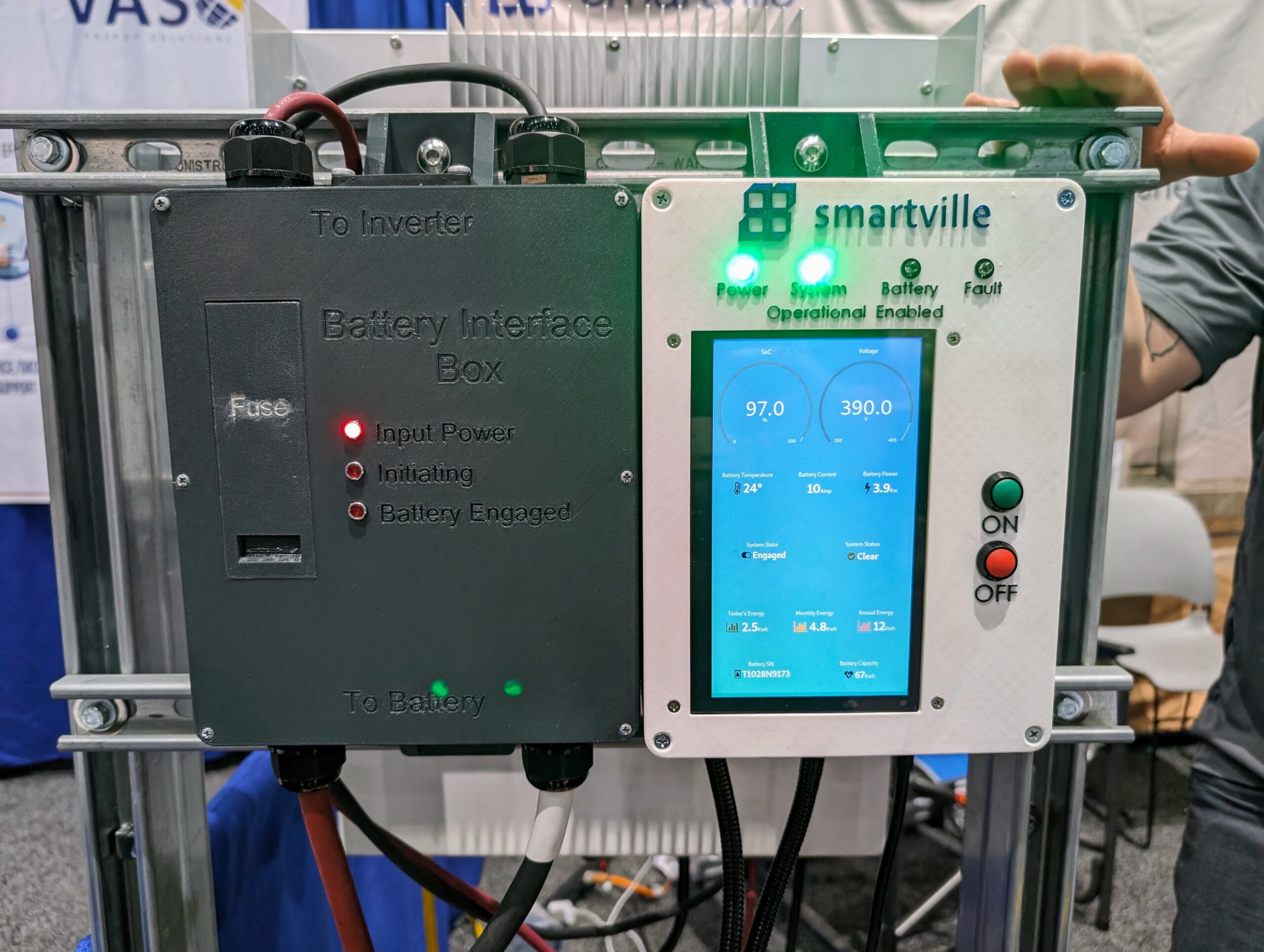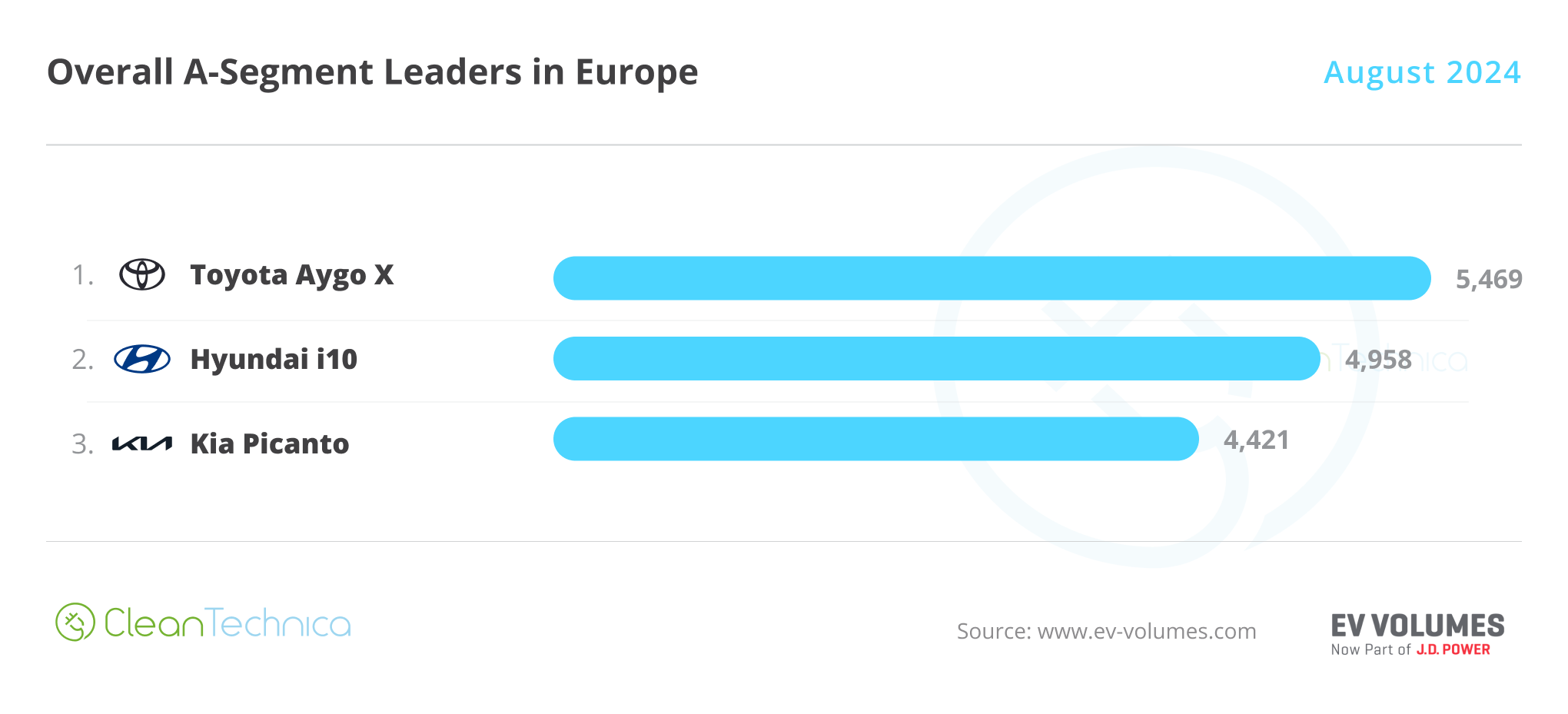Sign up for daily news updates from CleanTechnica on email. Or follow us on Google News!
Smartville showed up to Intersolar 2024 in San Diego this year in a booth in the startup corridor tucked way back in an unassuming corner of the show floor. Hidden in their booth in an unassuming gray box was perhaps the most exciting piece of tech we saw at the show.
They call it Mana Power, and it’s a box that allows DIYers, electricians, solar installers, and more to tap directly into a Nissan LEAF or Tesla battery pack and use its stored power for their home. Mana Power provides a hardwired connection to the battery and forces it to play nice with a vehicle-to-grid system. We picked up the basics of the system at the show and connected with Smartville CEO Antoni Tong for a phone interview to dive deeper afterwards.
Tapping Into Second Life Batteries
After giving used EV battery packs a health check with Periscope, it’s time to put them to use as stationary storage, and Smartville’s Mana Power is the tool that makes it all possible. When we first saw the prototype of Mana Power at Intersolar in San Diego, it was an unassuming pair of 3D boxes with a few cables coming out of the back. The boxes hosted the power electronics and cables to connect to the battery bundled together with a display for the user.
The cable sprouting out the front taps directly into the plug on an EV battery. There are currently different leads for Tesla packs and another for the Nissan LEAF. In Teslas, the high voltage battery connector is under the rear seat, though the Mana Power system was designed to be used with packs that are no longer in a vehicle.
To make full use of the battery for AC power output, the Mana Power must be connected to an external inverter. Smartville currently uses 400 volt inverters for the packs currently supported and more options will be added in the future as support for more battery packs are added. If the homeowner already has an inverter as part of a home solar system and it uses an LG battery system, Smartville is able to tap into that inverter for the Mana Power system as well.

From there, the system acts like any other stationary energy storage system in a home. It must be wired into the home’s electrical panel and connected to an automatic transfer switch, but everything from the pack on out exists already in today’s robust solar and storage industry.
[Disclaimer: This is not a DIY guide by any stretch of the imagination. Do be inspired, but also go out and do your own research before doing any electrical work. High voltage electricity can be hazardous to your health any may require help from an electrician. When in doubt, consult with a certified electrician before proceeding.]
Smartville planned to ship the first units to beta testers in July 2024, with plans to expand further after a period to gather and integrate learnings from these early users. More details about this system and for all the other things Smartville is doing, including its larger containerized energy storage systems that give post-consumer EV batteries a second life, head over to the company website.

It’s pretty cool to see outside the box thinkers and non-conforming companies building products that allow customers to do even more with the resources they already have. It’s not a terrible stretch to imagine someone who owns a Tesla vehicle installing a Mana Power system just as a backup power source in the event of a long duration power outage. When the power goes down, you can grab the cable to the Mana Power system, pull up the back seat in the Tesla, and plug it in with very little effort.
Back From The Dead
Currently, used 60-80 kWh EV battery packs range in price from $500-1,000 when headed to the recycler, around $4,000 for packs suitable for use in second life, non-EV applications, and around $6,000 for packs that can be put back into an EV as a used pack. There are a wide range of variables that impact these prices, and transportation is a key piece of that puzzle.
Smartville’s Periscope device is a handheld tool that’s currently built into a briefcase-sized Pelican case and comes with a few adapter cables for different battery packs. Salvage yards connect the tool up to the pack and start the health check, which runs through the battery pack’s state of health from top to bottom. Salvage yards don’t buy the tool, but instead pay Smartville each time they run the tool on a pack.

This process helps salvage yards dispatch incoming battery packs to recyclers and EV parts companies. It also conveniently provides an upstream supply of vetted batteries for Smartville to tap into for its Smartville 360 energy storage systems, Tong said.
Looking beyond Smartville, the ability for salvage yards to sell EV battery packs with a standardized bill of health provides a solid foundation for even more companies and customers to build something from. “They will have a battery feedstock coming from circular use,” Tong said.
A Renewed Focus
Smartville first came onto our radar with its Periscope product that allows salvage yards, repair shops, DIYers, and automotive companies to run through a full health check of used EV battery packs. I started talking to Tong about this, but it quickly became clear that Smartville has a much larger plan in mind.
Periscope will continue to be one of the core products at Smartville and will be joined later this year by Mana Power. This combination makes it possible — for the very first time — to quickly and accurately assess the health of a used EV battery pack and put it to work as stationary storage. Underpinning both of these tools is the third pillar of Smartville, and that’s Battery Connect.

Battery Connect is the software powering both solutions, capturing important data from the packs along the way. When Periscope does a health check on a battery pack, Battery Connect logs all of the relevant data into its Whole Battery Catalog database. They imagine this catalog becoming a repository for information as they continue to triage EV battery packs, put them into service, and build out energy storage solutions moving forward.
The Whole Battery Catalog provides traceability and provides the data necessary to support EU Battery Passport requirements. “We are trying to create a trail of data,” Tong said. The first point of data after the OEM builds the pack is when Smartville’s Periscope connects to the pack and starts its test.
Finally, Smartville plans to continue leveraging Periscope, Mana Power, and Battery Connect internally to build and sell its turnkey Smartville 360 energy storage systems. These systems utilize an array of battery packs and melds them together into a single energy storage system with Mana Power and Battery Connect. Smartville has already deployed over 15MWh of full service energy storage systems and plans to continue this as the core of the business moving forward.
To fund this work, Smartville has secured a host of government grants, with $26 million in funding to date. Most recently, Smartville secured $2.65M from federal and state funding to flesh out its second life battery repurposing solutions.
Moving Forward
“The industry is so small,” Tong said. He see immense value that the market is currently missing out on, largely due to uncertainty around the health of the battery pack itself. Others are building various parts of the EV battery pack second life ecosystem, but Tong said, “we want to focus on the whole enchilada.” The company is currently exploring opening up a seed round of funding to enable it to expand even further and faster.
This starts with the imminent launch of Periscope this summer, followed by the launch of Mana Power in the back half of the year. Scaling up these products will allow Smartville and its customers to assess more used EV battery packs, more accurately to disposition them, and ultimately squeeze as much life as possible out of them. That’s great news for customers, suppliers, salvage yards, automotive companies, and the planet.
Smartville is building adaptable, versatile solutions that can evolve as packs change. At present, Tong said the team is “working hard to get our product out. This year is going to be a very important year.” This company is doing some of the most exciting work in clean tech as far as we’re concerned, and we’ll be eagerly watching to see what they’re up to at every opportunity.
For more information about Smartville, head over to the company website or follow them on X.
Have a tip for CleanTechnica? Want to advertise? Want to suggest a guest for our CleanTech Talk podcast? Contact us here.
Latest CleanTechnica.TV Videos
CleanTechnica uses affiliate links. See our policy here.
CleanTechnica’s Comment Policy





